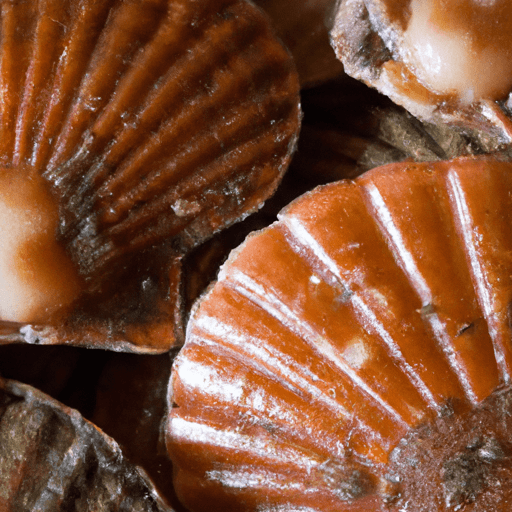The Delightful Delicacy: Exploring the World of Bay Scallops
If you’re a seafood lover, you’ve likely encountered the small, succulent wonders known as bay scallops. While larger sea scallops often steal the spotlight, these appetizing morsels have a devoted following of their own. In this blog post, we’ll take a deep dive into the delectable world of bay scallops, exploring their taste, common uses in cooking, nutritional value, and a sprinkle of intriguing history and facts.
Taste and Textural Delights
Bay scallops, scientifically known as Argopecten irradians, are celebrated for their tender texture and delicate, sweet flavor. Much smaller than their sea scallop counterparts, they typically measure around 1 inch in diameter. Their meat boasts a slightly firm yet tender consistency, offering a pleasant satisfying bite.
Versatility in the Kitchen
Due to their wonderful taste and texture, bay scallops lend themselves to a variety of culinary creations. These delectable shellfish are highly versatile, making appearances in both classic and contemporary dishes.
Bay scallops can be pan-seared, grilled, baked, or broiled quickly due to their small size, resulting in a rapid cooking process. They can also be enjoyed raw in ceviche or sushi preparations. Their sweet taste pairs beautifully with a myriad of flavors, making them a fitting addition to soups, stews, pasta dishes, and stir-fries.
Nutritional Nuggets
Apart from their culinary appeal, bay scallops offer a range of nutritional benefits. With a low calorie count and high protein content, they make for a healthy and flavorful addition to your meals. Bay scallops are also packed with essential minerals and vitamins, including vitamin B12, magnesium, phosphorus, zinc, iron, and potassium.
History and Fascinating Facts
Beyond their culinary applications, bay scallops have a rich history worth exploring. Native Americans were the first to appreciate the deliciousness of these bivalves, relying on them as a valuable food source for centuries.
In terms of production, bay scallops are primarily harvested in the Atlantic waters of the United States, with Cape Cod in Massachusetts renowned for its abundant scallop fisheries. This region has even established an annual festival, the Wellfleet OysterFest, to celebrate both oysters and bay scallops.
A curious fact about bay scallops is that they are often considered a sustainable seafood option. Their short lifespan and rapid growth make them a responsible choice for conscientious seafood lovers.
In Summary
Bay scallops offer a delectable experience with their delicate flavor and tender texture. Whether you enjoy them as the star of a dish or as a complimentary ingredient, these versatile shellfish are sure to delight your taste buds. From their fascinating history to their nutritional value, bay scallops have rightfully earned their place in the realm of seafood delicacies.
So, the next time you spot bay scallops at your local seafood market or on a restaurant menu, don’t hesitate to indulge in this delightful and rewarding delicacy. Explore the possibilities, savor the taste, and embark on a culinary journey that celebrates the ocean’s bounty!
Bay scallops
Origin: Bay scallops, also known as sweet scallops, are mollusks that are native to the Atlantic coast of North America, specifically the eastern United States and Canada. They inhabit estuaries, bays, and shallow coastal areas with sandy or gravelly bottoms.
Common uses: Bay scallops are highly prized for their delicate and sweet flavor. They are often used in seafood dishes, both cooked and raw. Some common uses include scallop ceviche, scallops wrapped in bacon or prosciutto, scallop risotto, pasta dishes, and stir-fries.
Nutritional benefits: Bay scallops are a good source of high-quality protein and are low in fat. They are also a good source of several important nutrients, including vitamin B12, magnesium, and zinc. Additionally, scallops contain omega-3 fatty acids, which have been linked to various health benefits.
Unique properties: Bay scallops are generally smaller in size compared to their cousin, the sea scallop. They have a distinctive sweet and tender flavor. Due to their small size, they cook quickly, making them ideal for dishes that require a short cooking time. Bay scallops have a creamy white color and a firm, yet delicate texture.
Historical significance: Scalloping has a long history in coastal communities along the North American Atlantic coast. Indigenous tribes used scallops as a valuable food source, and later, European settlers relied on scallops as a staple in their diet. Today, scalloping remains an important economic and cultural activity in many coastal regions. Scalloping seasons and regulations help sustain this valuable resource for future generations.




Use the share button below if you liked it.
It makes me smile, when I see it.